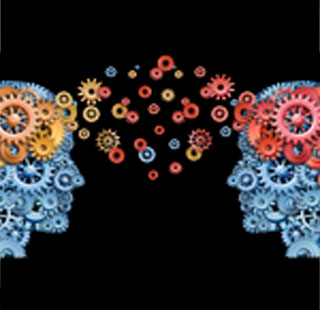ATD Blog
Your Brain on Change: Helping Clients Manage Change With Neuroscience
Fri Jun 14 2013

“There is nothing either good or bad but thinking makes it so.” —William Shakespeare
In my first article, I introduced you to the world of neuroscience and its potential to change the way we talk about managing and developing human capital. Now I’d like to zero in on a new way of looking at change management through the lens of neuroscience.
The first thing we need to understand is that the human brain evolved to keep us safe in a dangerous world where our ancestors met deadly threats at every turn. In this world, survival didn’t mean avoiding the next round of lay-offs; it meant avoiding being eaten by a tiger or mauled by a pack of wolves. Life was a short, constant battle to survive. And everything we are today was once a response to our need to survive.
In many ways, our brains—especially the more primitive parts—are still operating like they were back in those early days, constantly on the lookout for threats and responding with lightning speed to prepare us for fight or flight, our two most successful survival strategies.
Here’s how it works. When the segment of your brain called the hypothalamus senses a threat to your survival, it triggers a series of physical responses:
Your heart beats faster
Your breathing speeds up
Energy is released to your muscles
Your sense of awareness is heightened
At the same time, sensory information has been sent to the hippocampus, which begins to analyze the information. The hippocampus will determine if it has seen this situation before and make a more fact-based determination of potential danger. If it looks like danger, signals are sent to the hypothalamus and the fear response is triggered or heightened. The amygdala will capture the context of this experience so that when we remember it in the future, we will recall the emotions and physical sensations surrounding the event. (That’s how a significant childhood memory can be recalled with such rich, sensual detail.)
These and many other processes help your body prepare to fight or run like crazy. In today’s world, these responses still help us to stay alive in true life-or-death situations. But they also can be triggered by perceived threats to our employment, self-esteem, or economic stability. And with each exposure to a potential threat, we store more information in the hippocampus, allowing us to use this information to evaluate the next threat that comes along.
For those of us who are responsible for change management, we need to consider how the brain responds to change.
Bias against change. Every change is a potential threat, and since it is much safer to assume that a change in our environment is a threat and act accordingly than to assume that it is positive, human beings have been hard-wired to react negatively to any and all change—at least until we receive more information.
Stress. With each successive change we become more alert to the patterns of change and what threats they may bring to our safety, our economic security, or our self-esteem. Employees can suffer from “change fatigue,” a condition that looks like a mild form of Post-Traumatic Stress Disorder (PTSD). In a change fatigue state, the employee is experiencing stress, a condition brought on by repeated exposure to a fight or flight response. When the brain is under stress, our ability to think clearly and make decisions is greatly diminished. So it may be very difficult to reach employees who are in this state simply by explaining the facts to them—they are paying so much heightened attention to the potential threat that other messages have a hard time getting through to them.
Ironic process. Another byproduct of stress or severe mental overload is an interesting behavior by which we actually produce the results that we are trying the hardest to avoid. Golfers and other athletes understand this theory all too well. If we pay too much attention to the thing we are not supposed to do, this focuses our minds on that action so powerfully that we may almost feel compelled to do it. (I no longer tell myself, “Don’t go into that sand trap” for this reason.)
Switch cost. Contrary to popular belief, the brain does not multitask. Instead, it switches between tasks. Each time the brain switches tasks there is a loss of performance. When the brain is allowed to stay on task, improvements in performance are demonstrated. When we are asking employees to do something differently, we are imposing switch cost on them. Even if we expect improved performance in the long run, we must prepare for reduced performance while the employee is making the switch.
What do you think?
What are some of your best change management techniques?
Reviewed through the lens of neuroscience, do these techniques still hold up, or do you need to think about change management differently now?
Please join our community by discussing these questions in the comment section below.
Additional resources
This little video from Dr. Joe Despenza (uploaded on August 19, 2009) shows the neural network in the act of transformation: forming new connections and dissolving, or “pruning,” old, no longer useful ones. Just watching it was inspirational to me.
Dr. Norman Doidge: The Brain that Changes Itself. October 26, 2010
Transform your Mind, Change your Brain. Google Tech Talks, September 23, 2009. Richard J. Davidson
Fight or Flight: How Stuff Works
For more on neuroscience applications for human capital, check out the full blog series here.
